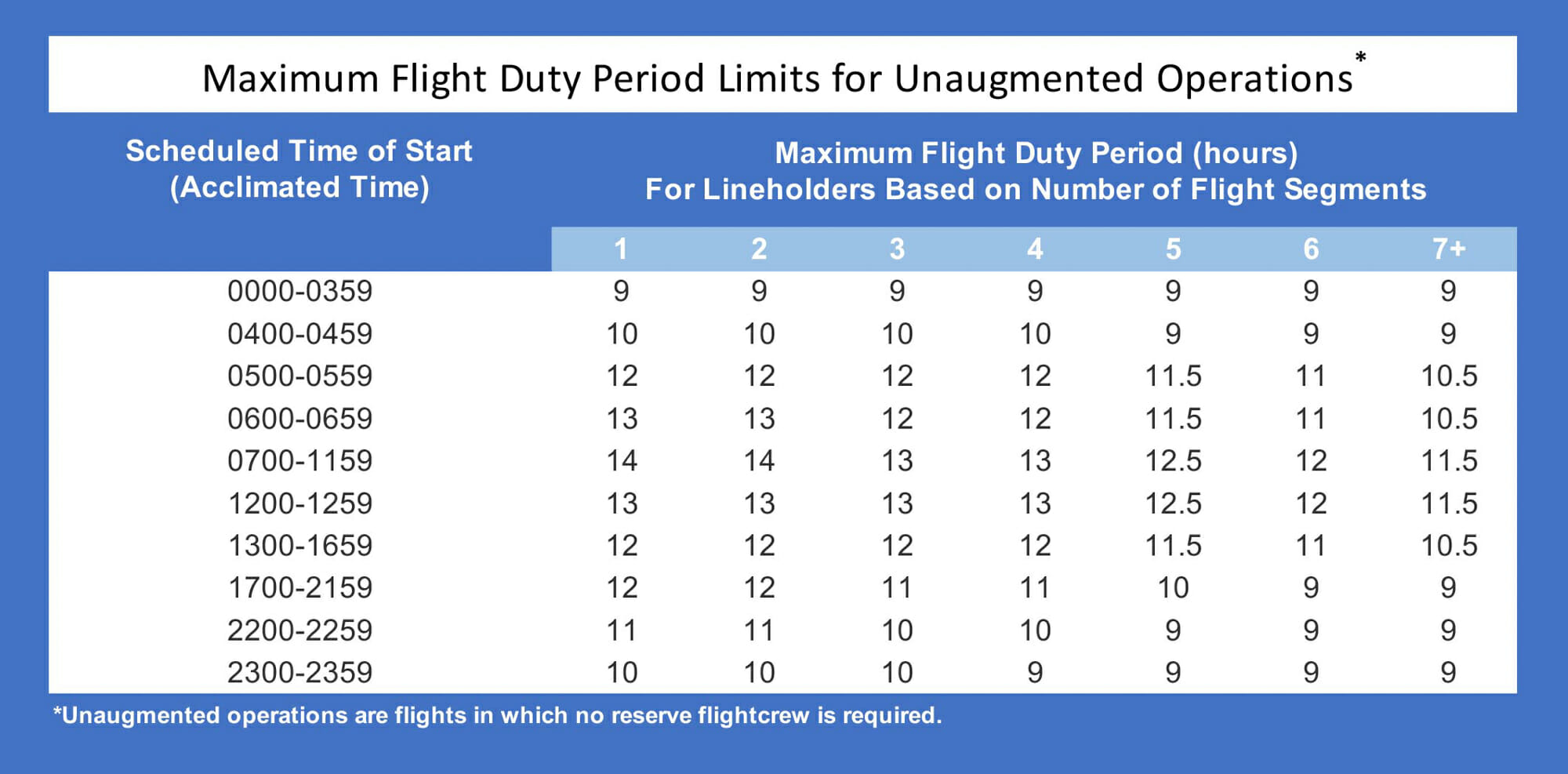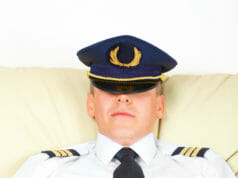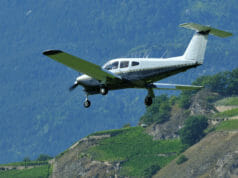
In 2010, as a direct result of the Colgan crash the year prior, Congress passed the Airline Safety and FAA Extension Act of 2010, resulting in sweeping legislative changes for the FAA and the airline industry as a whole. There are several different components to the law, most of which are fairly well known by now, but a few are not. It is also well known that opinions on the effectiveness of the legislation vary between two main camps; those who support it, and those who don’t.
Previously, we examined the 1500-hour ATP requirement, so now we’ll focus on the second biggest component of the rule making, which are the revised rest rules under FAR Part 117.
The purpose of Part 117 was to address some of the fundamental crew rest issues that predated the Colgan accident. It was fairly well established during the investigation that the crew of the flight was almost certainly operating at a fatigued state, which was likely a major factor contributing to their low performance. The Colgan crew would have been operating under the same rest rules as every other airline pilot in the industry, so Congress tackled the rest rules.
FAR 117 essentially addressed several basic areas of existing rules. The first of these was the “legal to start, legal to finish” rule previous to 117. The “legal to start, legal to finish” system was replaced with a strict set of duty limits and flight time limits, which when met, mean the crew is finished flying for the day, regardless of the circumstances. Essentially, there are potentially three rolling clocks that run concurrently when the pilot goes on duty (either for a trip, or reserve, depending on the circumstance).
The first clock to expire determines the end of the pilot’s ability to operate an airplane, regardless of whether or not the other clocks have expired. This clock starts at the moment the pilot is scheduled to begin duty. The other component of 117 related to this, is that the duty limits are roughly based on proven sleep science, i.e. normal human circadian rhythms and sleep cycles. If the crew is operating a flight on the back side of the clock, or is starting outside normal waking hours, the time limits are subsequently reduced in accordance with normal sleep cycles. While a pilot who begins his duty day at 8am might have up to 13 hours of available duty time, another pilot starting at midnight may only have nine hours. The rules also clearly define that ANY duty prior to having the intent to operate a flight (deadhead, repo, test flight, ground transportation, etc.) counts toward the cumulative duty limit for the day, while any of those occurring after operating the schedule do not (with the exception of interfering with the required rest period). In other words, a deadhead at the beginning of a day counts, while a deadhead at the end of the day does not.
 The FAA put protections in place to ensure that there are no terminal delays in scheduling designed to keep the pilot “on the clock” without using the duty time. This applies mainly to reserve pilots who wouldn’t necessarily be covered by the normal “duty” limits applied by FAR 117. In this case, there is a specific Reserve Availability Period or RAP which starts the minute the pilot the goes on-call. This clock can be circumstantially up to 16 hours, to allow protection from being on call for a long period of time and then assigned a long flying day at the end of a long call period. If the RAP expires before the duty time (as used in the example where the pilot gets a trip at the end of the reserve call period) then the pilot is done flying in the same way that they are if they exceed a duty period. These are two of the clocks that can be running concurrently to expire the duty period and when the first clock is exceeded, the pilot is no longer legal to fly.
The FAA put protections in place to ensure that there are no terminal delays in scheduling designed to keep the pilot “on the clock” without using the duty time. This applies mainly to reserve pilots who wouldn’t necessarily be covered by the normal “duty” limits applied by FAR 117. In this case, there is a specific Reserve Availability Period or RAP which starts the minute the pilot the goes on-call. This clock can be circumstantially up to 16 hours, to allow protection from being on call for a long period of time and then assigned a long flying day at the end of a long call period. If the RAP expires before the duty time (as used in the example where the pilot gets a trip at the end of the reserve call period) then the pilot is done flying in the same way that they are if they exceed a duty period. These are two of the clocks that can be running concurrently to expire the duty period and when the first clock is exceeded, the pilot is no longer legal to fly.
The third clock that runs with the first two is the flight duty limit, which is the maximum amount of time the pilot can actually fly an airplane within a duty period. This clock starts when the first leg blocks out and stops when the leg blocks in. This continues for each leg. If cumulative flight time for the day exceeds the respective eight- or nine-hour limit, then the pilot is no longer legal to fly, even if they have RAP or duty time remaining. Again, the limit here is based on the pilot’s scheduled show-time, with consideration for circadian rhythms.
For example, if a reserve pilot has a scheduled call period from 6am to 8pm, and then gets a call at noon to fly one four-hour leg then overnight, then the maximum time on duty is until 10pm, because the reserve period plus the flight duty period can’t exceed 16 hours, or the Table B duty limit plus four hours, whichever is less. Table B in FAR 117 says that a single leg with a noon show is good for 13 hours of duty and the Flight Time Limit table says that a noon show time is good for nine hours.
The most effective way to calculate the times, is to apply all three clocks individually, and figure out which stops first. We know that the RAP can’t be longer than 16 hours, which makes 10pm the latest possible limit for RAP in our example. The duty clock starts at noon and is legal for 13 hours, which means it doesn’t expire until 1am. Finally, since the actual flight leg is only scheduled for four hours, this means the pilot is unlikely to exceed the nine-hour flight time limit. Looking at this scenario, we quickly see that the first clock to expire would be the RAP limit, so if there is a delay or change of schedule and it takes the pilot’s schedule beyond 10pm, they would be illegal for the trip. This is a very straightforward example but can quickly become a more complex and critical calculation if there are multiple legs, scheduled downtime during a duty period, a lot of scheduled flight time, or significant delays to the pilot’s schedule.

FAR 117 also changes the calculation to a “leg-by-leg” requirement, which means that the pilot must sign each leg that they are fit to fly and legal to fly. If they can’t legally complete the leg within limits, then they are forbidden from starting that leg and are “timed out.” Of course, there are limited exceptions to this where the pilot can voluntarily extend for either 30 minutes (unlimited) or up to 2 hours (only once before receiving 30 hours of uninterrupted rest), but the system is designed to not be reliant on extensions and the company can’t force or coerce the pilot into extending.
Mandatory rest rules comprise the second major component of FAR 117. These new rules changed the requirement from eight hours of rest to ten hours of minimum scheduled rest with an opportunity for eight hours of uninterrupted sleep which essentially allows for a minimum of eight hours behind the door. That generally means two hours for transport both ways, as well as checking into the hotel, etc. before starting the eight-hour sleep opportunity. If the company is unable to protect the eight hours of sleep opportunity with a ten-hour rest period, then the rest period must be extended to ensure the eight hours is not violated. This is vastly different to previous rules that allowed the eight hours to be consumed by transport and check in, often leaving as little as a few hours for sleeping. The rest rules part of 117 also sets forth minimum rest periods within time frames that roughly correspond to one week, one month, etc. These must not be violated, or the pilot is not legal to fly. One of the factors that makes 117 calculations more difficult is that all limits are based on “rolling clocks” so they change in real time. For instance, under the old rules, a pilot was unable to fly more than 1000 hours within the calendar year. With 117, this changed to a rolling 12-month period, meaning that all calculations for duty legality must both look forward to the scheduled duty, as well as backward to previously scheduled duty to ensure no conflict with the duty limits. If there is a conflict in either direction, then the duty is illegal. The new rules also set forth a joint responsibility between the pilot and the company, and both are responsible for ensuring that all requirements are met. Final responsibility is placed on the pilot to not fly fatigued no matter the circumstances.
A third component of the rest rule requirements of 2010 (that most airline pilots have seen but may not understand as part of the same requirements as 117) is the requirement for 121 carriers to develop and implement an FRMP or Fatigue Risk Management Plan. Essentially, this puts a requirement on every Part 121 airline to track fatigue events, classify them, determine the root cause and then just adjust the operation as required to mitigate them. It also prevents punitive actions for calling in fatigued, engaging FAA oversight and participation in the process, as well as a formally approved process by which such situations will be handled (similar to ASAP or FOQA programs). This helps ensure that the focus remains to mitigate fatigue rather than trying to push crews to not call in fatigued.
Overall, the application of 117 is a little bit cumbersome, but is effective, in most cases, at reducing pilot fatigue. There is often a lot of misunderstanding among pilots about limits, but that is often the result of not understanding that there are three separate clocks running concurrently and each has a limiting timeframe. For this reason, the most reliable method seems to be making the three calculations and determining which is limiting. There are commercial software and phone apps available, but it should be noted that they are not “official” and won’t protect the pilot from possible violation if they are in error. If there is a doubt about legal limit times, scheduling must be consulted, and both the pilot and company must verify the duty periods using company software. If there is uncertainty, then it must be double checked until a determination is made, or the duty cancelled.
The main reason there is a no consensus as to the effectiveness of 117 is attributed to the fact that the Colgan crew members were fatigued from events that occurred off-duty, which FAR 117 doesn’t directly address. It is likely that the captain tried to sleep in the crew room the night before to avoid having to get a hotel room (an unfortunate reality on regional airline pay rates) and we know from the CVR transcripts that the first officer was fatigued from a combination of commuting all the way across the country prior to starting her duty, as well as having cold-like symptoms, both of which she discussed during flight. The argument can be made that 117 doesn’t address off duty actions, which cannot be fairly regulated without violating civil liberties, but 117 did create two indirect avenues to protect against this occurrence. First, it places a responsibility on the pilot NOT to fly if they are fatigued, regardless of cause. Second, it has built a program (FRMP) to help protect the pilot from disciplinary and duty pay reduction if they are forced to call in fatigued due to circumstances that fall within the protections of the program.
Now that 117 has been in place for a number of years, it does seem to be quite effective at improving the average rest for crews as well as mitigating fatigue while on duty. Even though it cannot legally address personal time, it has provided some indirect protections for fatigue-related events that fall into this category. It is much more comprehensive, much more clearly designated and much more closely monitored. The addition of fatigue reporting systems increases the chances that it will continue to be effective into the future.






















































































































